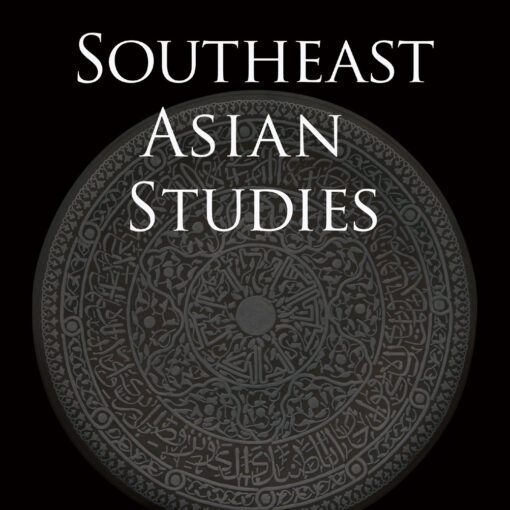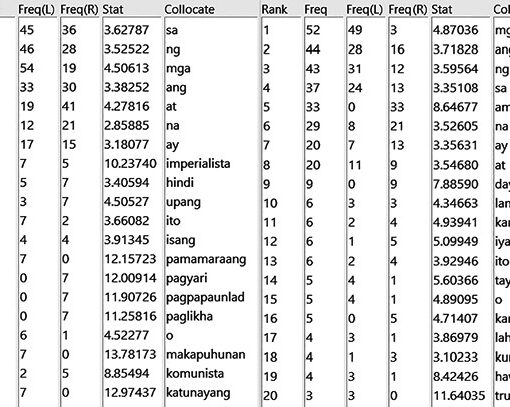Contents>> Vol. 11, No. 3
BOOK REVIEWS

Irregular Migrants and the Sea at the Borders of Sabah, Malaysia: Pelagic Alliance
Vilashini Somiah
Cham, Switzerland: Palgrave Macmillan, 2021.
Vilashini Somiah, the author of Irregular Migrants and the Sea at the Borders of Sabah, Malaysia: Pelagic Alliance, makes her book-publishing debut on a topic that is perhaps the most controversial in Sabah today. Undocumented, now called irregular, migrants in Sabah are known to come primarily from two neighboring countries, the Philippines and Indonesia. Numbering in the hundreds of thousands, in a state population of just over 4 million people, a single definitive decision on whether or not to integrate these migrants into the somewhat hostile Sabahan society has not been forthcoming. As a result, the Malaysian state resorts almost exclusively to deportation and repatriation to curb migrant numbers—and yet, at the risk of capture, irregular migrants continue to make the perilous and covert sea journey back to Sabah. Somiah contends through her investigations at her field site of Sandakan, on Sabah’s eastern coast, that Philippine-descent migrants are in fact returning, because for them the locus for home includes the Sabahan border and the sea. In other words, irregular migrants keep coming to Sabah simply because it is home.
The book begins with situating the migrant at the border. Over time, what results is the familiar setting that goes along with this habitus: quarantine stations, enforcement personnel and police who conduct raids and set up roadblocks, and immigration agents from both Malaysia and the Philippines. As details of informants’ firsthand experiences start to emerge, it becomes evident that the historical fact of Sabah’s lease to the Suluk royal descendants (an oft-cited reason in the media as the impetus for human movement at the Sabah-Philippines border) is not altogether relevant to migrants. Instead, the sense of belonging to Sabah and claims on Sabah as being home prevail. In Chapter 2 Somiah explains how her interlocutors understand the idea of home as a perfect coalescing of the sea and land, so that the approximate term used by interlocutors for their place of belonging, sini (here) (p. 37), suffices. By bringing the sea into focus and demonstrating a pattern of migration that is guided by the sea, Somiah shows how the water imbues migrants with enough power and agency to counter the repatriation and security culture they are subjected to on land.
The core chapters of the book draw readers to appreciate poignant stories from each migrant generation, beginning with the wives and mothers (Chapter 3) and the men who attempt the return (Chapter 4). Somiah illustrates how women left behind by deported migrant men might seek to space out their pain and loss by the timing of the tide: in and through the sea-home, women seemingly inert and numb experience being comforted, reassured, and healed. Once the women are buoyed by the spirit of resilience that they gain from the sea, the agency within them becomes key to either spur them on to moving farther inland or to help them cast aside their past and so create a distance from the uncertainty of a returning/non-returning mate. There is a striking parallel with the deported men: since they were born in Sabah, many spend time working in the Philippines in unfamiliar places collecting just enough money before making the return journey. If their gamble pays off, their overwhelming desire to go home to Sabah to be back in the arms of their loved ones is well justified even if they are emotionally suspended until the reunion, and even if deportation reoccurs. In the backdrop, locals show a keen sense of their counterpart’s humanity, and their compassion moves them to facilitate the cyclic nature of migrant departures and arrivals unto Sabah’s shores, albeit their role may, in some aspects, be more than complicit.
The pelagic alliance starts to wane somewhat for younger generations as harsh realities await Sabah’s migrant children, as described in the penultimate chapter. The sites of unmasking the otherwise invisible migrant identity, at the roadblock and the detention center, explained earlier on in the book now juxtapose sharply against the alternative learning centers that school-going migrant children appear to thrive in, and the youth hanging-out spaces in the town square. These are sites for camaraderie and identity making, respite and agency, however temporal, and yet they are not enough to lift the spirits of migrant youths. Longing for legitimacy and acceptance in their birthplace of Sabah, the youths are concerned about living in limbo with each passing year. Lacking identity documents, they are barred from further education and skills training despite wanting to engage in a fruitful way with the rest of Sabahan society. In the informants’ own words, Somiah illustrates the untenable future of migrant children in Sabah: marginalized by the limitations of their social mobility, in order to resist and cope with their maligned life histories, migrant youths attempt to subvert the discrimination against their existence and call themselves antu (ghosts) (p. 126), the term for a deep-sea monster that is symbolic of the deep despair and frustration they must feel.
As the book ends, the narrative of longing for home and belonging leads readers to ponder on Philippine migrants’ indigeneity in Sabah and how it should not be easily discounted. As the author notes, “Human migration is fluid, open and constant, but nation-states impose restrictions on these movements, making these experiences hard, rigid and static” (p. 162). Somiah reiterates the complex migrant-sea nexus and appeals for greater human rights for migrant communities in Sabah; some of her suggestions include interviewing irregular migrants of Indonesian descent to round out her study. Border migration in Sabah, being an intractable situation for over fifty years, undoubtedly deserves a fresh look.
Overall, Irregular Migrants and the Sea at the Borders of Sabah, Malaysia: Pelagic Alliance is a compelling volume from start to finish. Rarely has the border migration situation in Sabah been seen through the eyes of migrant communities, at least not so far in a book-length examination. By bringing to the fore the powerful and evocative images of her informants, Somiah offers valuable insights into the cry of migrants to belong amid the heavy culture of surveillance, and compels readers to sympathize with irregular migrants, to see them as humans with children and families and not merely as governmental statistics. As such, Somiah does not stick to the traditional approach of treating each subject matter—the land, the sea, and migrant people—separately or chronologically. Her focus on weaving the unique experiences of her informants into the narrative deserves much credit. So too does her care with language: richly described, with much emphasis on nuances expressed in the local vernacular and written in a narrative that is wholly accessible, this book is a delight for the anthropologist reader. It is also versatile enough to be used as a how-to in ethnographic study to train university students keen on exploring societal issues involving migration and belonging.
In the end, the migrant story in Sabah may always be tainted by the illegality of undocumented entry and re-entry; but perhaps one of the most important contributions of this book is how it discusses the various forms of under-documentation that plague migrants. Through no fault of their own, Philippine descendants of undocumented migrants who are born in Sabah do not own any form of identification as proof of citizenship that is acceptable by either the Malaysian state or the Philippine government. While Somiah does not claim to have solutions for the problem, this book could be a meaningful place to start a conversation on what it means to truly belong in Sabah in the present time.
Trixie M. Tangit
Faculty of Social Sciences and Humanities, Universiti Malaysia Sabah
![]() https://orcid.org/0000-0002-2431-4798
https://orcid.org/0000-0002-2431-4798
DOI: 10.20495/seas.11.3_515



